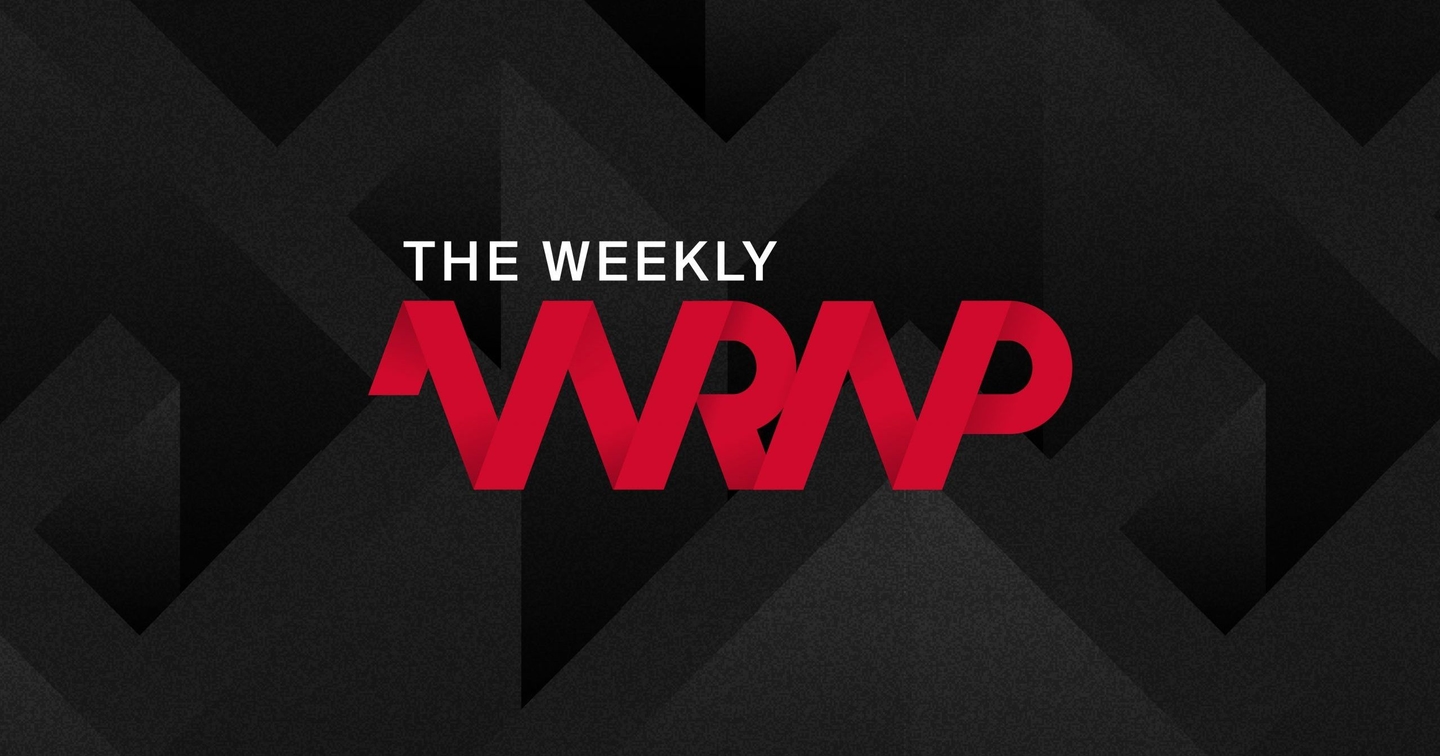
The Road to Crypto, Crypto Industry under Scrutiny and Macroeconomics

1. Financial Turmoil and Banking Crisis – The Road to Crypto?
The Facts:
- Following the last Weekly Wrap, reporting the current banking crisis and consequent “unbanking of the crypto industry”, it was a mere two days, before 166 year old Swiss banking giant Credit Suisse had to be bailed out and has subsequently been taken over by UBS, which had to be bailed out in the 2008 financial crisis already.
- Overall, the banking sector has been hit hard, seeing valuations decline substantially as a result, while financial conditions remain tight.
- Our complete statement on “The Credit Suisse Crash and the Case for Crypto”.
Our Take:
- A notable observation that can be made in the current banking and financial crisis is that banks did not fail due to credits and loans defaulting, excess leverage or other risky endeavor.
- The financial vehicle that took the banks down were publicly listed government bonds, which lost tremendous value due to the recent monetary policies and sharp rate hikes, seeing substantial unrealized losses, which caused panic amongst investors.
- Paradoxically, the drawdown on “safe” treasury and government bonds has been caused by sharp interest hikes, which were hiked due to inflation rising, which was mainly caused by too much liquidity provision and quantitative easing, whereas the current solution to the financial turmoil is again quantitative easing, reigniting the vicious cycle once again.
- An anecdote from economics is how monetary policy makers are trying to adjust the water temperature in the shower, always responding to the currently cold water with too much hot water, but once the water gets hot, it is too hot, making them rapidly turn the temperature down, until it becomes too cold again, starting all over.
- The constant “over- and undershooting” of the current monetary policy is causing much of the current volatility we are observing in the traditional financial system, whereas the crypto markets seems to decouple amidst the financial distress, recovering substantially of the recent lows.
- A likely explanation is that considering the issues and recent volatility surrounding TradFi banks, crypto investments do not appear as such a volatile and “risky” investment, relatively speaking.
- Furthermore, it was a first time that many investors and market participants witnessed first hand some of the many flaws of the financial system and its crony capitalism, not true, free capitalism, which led them to revisit the crypto narrative and opt for an increased embracement of the crypto asset class.
- Going forward, the current development and endorsement for the crypto asset class amidst financial turmoil and banking crisis is a very strong signal, for positive times in crypto, going forward.
0.394 Trillion U.S. Dollar
The amount of money that has been pushed into the financial system as a result of the recent banking crisis, as proxied by the assets held on the FED’s balance sheet.
Plotting the FED Balance Sheet against Bitcoin’s price – The FED reversed more than half of its quantitative tightening of the past year in just two weeks.

2. Coincidence or Coordinated? The Administration’s Attack on the Digital Asset Ecosystem
The Facts:
- A recent hearing in the U.S. House Committee on Financial Services titled “Coincidence or Coordinated? The Administration’s Attack on the Digital Asset Ecosystem” investigated the headwinds the crypto industry is currently facing in the United States.
- The meeting took place just days before the failure of the three crypto friendly banks, including the seizing of Signature bank.
- Parts of the hearing and questioning surrounded the more than 100 crypto enforcement actions of the SEC, of which it did not lose a single case so far.
- This week the SEC issued an investor alert which urges caution around “cryptocurrency asset securities” investments.
- Overall, a large conflict exists between the Commodities and Futures Trade Commission (CFTC) and the Securities and Exchange Commission (SEC) over which regulatory body gets the jurisdiction over the crypto industry.
Our Take:
- The hearing sets an important precedent, as just the committees’ topic title aligns with what has been titled “Operation Chokepoint 2.0”, capturing the crackdown of current U.S. administration on the crypto industry.
- An important critique of the hearing was that despite the SEC “offering” to crypto companies to register with them, all filings so far have been rejected, and countless companies got sued in return despite their efforts to comply and register with the SEC.
- Furthermore, participants have criticized regulators for not being proactive, despite initiatives and efforts from the crypto industry to provide guidelines, under which they can operate.
- It was also acknowledged, that crypto does not and has not caused any (financial) systemic risks, and with more than 20% of Americans currently holding crypto, there appears to be significant distrust in the current banking system.
- With the current headwinds the crypto industry faces from the U.S. it is likely that crypto will continue to move off-shores, a trend that has been ongoing recently, as places such as the EU, the U.K and especially Asia embracing crypto increasingly, while providing proper regulatory frameworks for crypto entities.
- With more awareness surrounding the crackdown on crypto in the U.S. the crypto industry itself will become more robust and decentralized, in the same way that China banning crypto caused the last wave of increased decentralization, distributing crypto entities and their operations more equally globally.
- A risk, however, is that enforcement agencies and regulatory bodies that are U.S. based, such as the Financial Standards Board (FSB), Financial Actions Task Force (FATF) or the Office on Foreign Asset Control (OFAC) will pressure foreign nation-states to comply with the current U.S. course of action, creating difficult working environments overseas as well.
- However, such actions would not only drive the crypto industry to further decentralization, but also further fuel the trend for decentralized finance (DeFi) even more.
For his part, Frank, who helped draft the landmark Dodd-Frank Act after the 2008 financial crisis, said there was “no real objective reason” that Signature had to be seized.
I think part of what happened was that regulators wanted to send a very strong anti-crypto message,” Frank said. “We became the poster boy because there was no insolvency based on the fundamentals.
Barney Frank – co-drafter of the Dodd-Frank act “which sought to make the U.S. financial system safer for consumers and taxpayers” (Investopedia) – via CNBC article and interview on why Signature Bank got seized by U.S. regulators.
3. Macroeconomics Update
The Facts:
- The YoY U.S. CPI of February continued to decrease, standing at 6.0%, matching the consensus estimate of 6.0% and 0.4% lower than previous month’s rise of 6.4%, as consumer prices on all fronts remained mainly unchanged.
- Even the rather sticky core U.S. CPI, excluding food and energy, came in exceeding the consensus expectations as well, at 5.5% YoY in February, 0.1% lower than previous month’s YoY core CPI.
- MoM U.S. CPI in February came in at 0.4% (estimated at 0.4%), while core MoM U.S. CPI rose to 0.5%, exceeding the forecast and previous 0.4% MoM increase.
- Notably, the job market remains very unaffected, with jobless claims sustaining their previous level despite inflation cooling off, and the employment rate being stable.
- The FED Funds target rate now stands at 4.75% to 5.00 %, according to market expectations, down from recent expectations.
Our Take:
- The labor market and the economy are still relatively strong, despite the sustainably elevated inflation levels and interest rate.
- Nevertheless, the side effects of sustainably elevated interest rates have been felt in the banking and financial sector already, which indicates that at some point the consequences are likely to spill over into the broader economy, resulting in further economic downturns.
- Overall, the current interest rates and inflation rate are unsustainable, and financial conditions are tightening, despite the recent liquidity injection due to the bank failures, which is why it is unlikely that the downturn is over at the current stage.
- Also, the volatility around the terminal interest rate has to be addressed, as the market predictions went from around 5% and rate cuts later this year, to 6% and no rate cuts being priced in for this year, to the currently more dovish outlook of sub 5% and rate cuts by this summer, implying that it remains to be seen, whether a FED pivot will cause relief in the markets rather sooner than later.
- Due to the FED’s dilemma of not being able to ease, with inflation outpacing the interest rates, the situation the FED finds itself is difficult, and there is a high probability, that further economic and financial distress are ahead of us throughout this year.
- Nevertheless, the crypto markets seems to increasingly decouple, despite the economic downturn and the financial system troubles which is why there is a generally positive outlook on crypto which seems to wake up for a “crypto spring”.
In other news
- Coinbase: “We asked the SEC for reasonable crypto rules for Americans. We got legal threats instead.” (via Coinbase)
- Arbitrum airdropped its ARB token this week (via Delphi Digital)
- Coinbase vs. the SEC (via Unchained)
- Terra founder Do Kwon arrested in Montenegro (via Cryptoslate)
Curious what the year 2023 will look like? Read our 2023 Outlook, which has been published recently.
The latest episode of Decrypt titled “The Shanghai Upgrade and what is means for investors” focusses on the upcoming Ethereum upgrade dubbed Shanghai/Capella and its possible volatility implications. Will we see a bullish unlock?